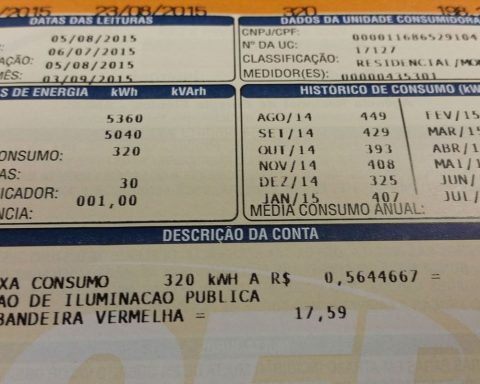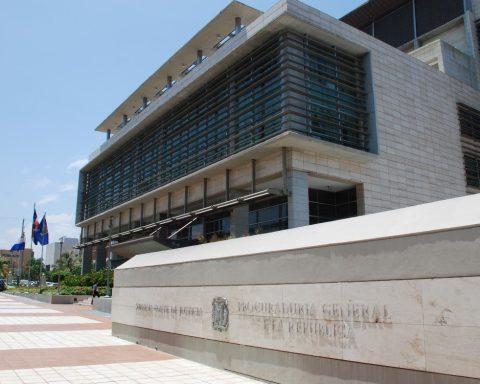The new fiscal rule that will replace the spending ceiling will limit expenditure growth to 70% of the revenue variation of the previous 12 months, the Ministry of Finance has just informed. The new framework will combine an expenditure limit that is more flexible than the expenditure ceiling with a primary result target (result of public accounts without public debt interest).
The supplementary bill released this Thursday (30) will have adjustment mechanisms and some flexibility in case of unforeseen circumstances in the economy. The primary result targets will also follow a band, a range.
Within this 70% revenue variation track, there will be an upper limit and a floor for expenditure fluctuation. In times of greater economic growth, expenditure cannot grow by more than 2.5% per year above inflation. In times of economic contraction, spending cannot grow by less than 0.6% per year above inflation.
The new fiscal framework establishes mechanisms for the next governments. To prevent non-compliance with the 70% revenue growth route, the new rules will introduce punishment mechanisms that will slow down spending if the spending growth trajectory is not met.
If the primary result falls below the lower threshold of the band, then next year’s expense growth drops from 70% to 50% of revenue growth. In order not to punish investments (public works and purchase of equipment), the new framework provides for a floor for this type of expenditure and allows that, in case the primary surplus (government economy without public debt interest) is above the ceiling of the band , the surplus will be used for public works.
The economic team clarified that the 70% threshold is based on past revenues, not on estimated future revenues. In this way, future governments or the National Congress will not be able to artificially increase revenue forecasts to raise expenditures.
According to the Minister of Finance, Fernando Haddad, the new framework brings clear, predictable and credible rules, because they can be executed. “During the 2022 campaign, we repeated to exhaustion that the public campaign needs to be credible, predictable and serious. Having a horizon for families, investors, entrepreneurs and workers to organize their lives based on clear rules. Demanding but believable rules, ”he declared.
Haddad said that the new framework allows self-correction mechanisms, which will make life easier for public managers. “The rule itself needs self-correction spaces. As much goodwill as public managers have, they themselves will be in a difficult situation to correct course if there is not, in advance, a correction mechanism ”, he justified.
Estimates
According to Haddad, the government intends to eliminate the primary deficit in 2024, reach a surplus of 0.5% of Gross Domestic Product (GDP) in 2025 and 1% of GDP in 2026. As the economic team foresees a primary deficit of 1% of GDP for this year, the proposal would mean an adjustment of 3 percentage points of GDP until 2026.
As there will be a tolerance margin of up to 0.25 percentage points of GDP, the primary result may vary between a deficit of 0.75% of GDP and 0.25% of GDP this year, a deficit of 0.25% and a surplus of 0.25% in 2024, a surplus of 0.25% to 0.75% of GDP in 2025 and a surplus of 0.75% to 1.25% of GDP in 2026.
Regarding government debt, the new fiscal framework foresees a slight growth in gross public debt until 2025 and stabilization in 2026, at 76.54% of GDP. These projections, however, occur in the scenario in which the primary result is in the center of the limits foreseen for the bands. If the government saves less than expected, the debt will rise from 74.11% of GDP in 2023 to 77.34% in 2026.
If the Central Bank reduces interest rates, the Ministry of Finance pointed out, the indebtedness could fall. With a possible drop of 1 percentage point in the Selic rate (the economy’s basic interest), the gross public debt could go from 75.07% of GDP in 2023 to 75.7% in 2024 and retreat to 75.04% of GDP in 2026. With a reduction of 2 points, it could fall from 75.03% of GDP this year to 73.58% in 2026.
fiscal framework
The new fiscal framework replaces the federal spending ceiling, which has been in force since 2016 and limits spending growth to the previous year, corrected by official inflation (Ample National Consumer Price Index – IPCA). At the end of last year, the Constitutional Amendment of the Transition allowed the exclusion of up to R$168 billion from this year’s spending ceiling – R$145 billion from the new Bolsa Família and up to R$23 billion in federal investments if there is excess revenue.
The amendment established that the government should submit a complementary bill by August of this year with the new fiscal framework. At the beginning of the year, however, the Minister of Finance, Fernando Haddad, allowed the government to anticipate the sending of the new framework so that the Ministry of Planning had time to prepare the project for the 2024 Budgetary Guidelines Law (LDO) within the new rules. Submitted to Congress by April 15 of each year, the LDO establishes the parameters for the following year’s Budget.
Check out the main points of the new fiscal framework:
• Primary expenditure growth limit to 70% of the revenue variation of the previous 12 months
• Upper and lower limit within this track of 70% revenue increase
• Adjustment mechanism to prevent increased spending in times of economic growth and a drop in spending in case of low growth
• Application of punishment mechanisms. If the primary result is below the minimum limit of the band, the growth in expenses for the following year drops from 70% to 50% of the growth in revenue.
• Promise to zero the primary deficit in 2024, with a surplus of 0.5% of GDP in 2025 and 1% in 2026
• The primary result target will have a fluctuation band, with a tolerance margin of 0.25 percentage points of GDP for each year
• Excess primary surplus above the band ceiling can be used for investments
• Promise that gross public debt will rise slightly until 2026 and then be stabilized
• Exceptions only for expenses instituted by the Constitution, such as Fundeb and the national nursing floor. These expenses cannot be regulated by supplementary law
Matter amended at 11:56 am to add statements by the Minister of Finance, Fernando Haddad, at 12:02 pm to include projections of public debt, in the event of a reduction in the Selic rate, and at 2:05 pm to correct information in the third paragraph.












